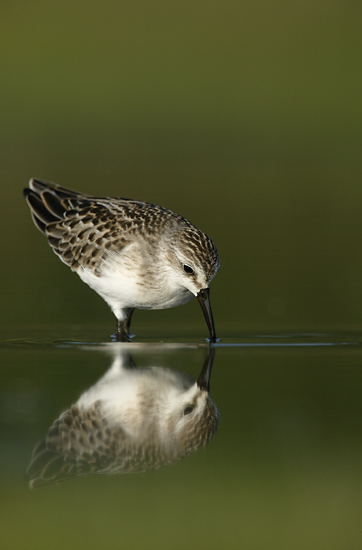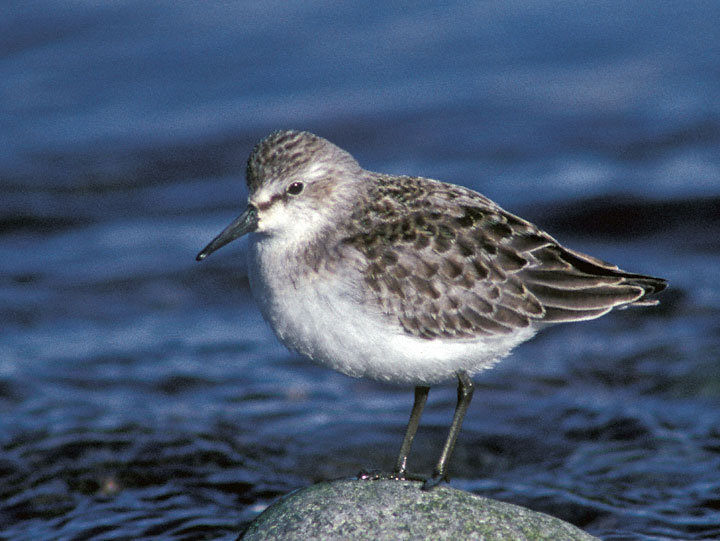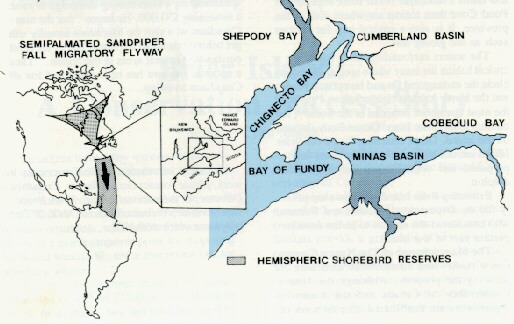 Sandpiper
SandpiperNavigating the site:
Changing currents in coastal conservation
 The Semipalmated Sandpiper (Calidris pusilla) is one of the small shorebirds collectively referred to as "peeps" or "stints". These flocks of small birds play an important role in transferring the energy inherent in the enormous invertebrate wealth of the sand beaches to other parts of the the world's seashores because of it migratory patterns.
The Semipalmated Sandpiper (Calidris pusilla) is one of the small shorebirds collectively referred to as "peeps" or "stints". These flocks of small birds play an important role in transferring the energy inherent in the enormous invertebrate wealth of the sand beaches to other parts of the the world's seashores because of it migratory patterns.
The species breeds in the far north in areas such as Alaska, northern Canada, the Bay of Fundy area, etc. It migrates across much of the U.S. to winter in the Caribbean and northern South America.
There are very few documented records of this species wintering in the United States except for extreme southern Florida.
The bird below was photographed in September, 1992 in Gulliver's Cove, Nova Scotia with a Canon T-90 & FD 400mm F4.5 lens on Kodachrome 64. The camera and lens were hand held on a BushHawk shoulder mount. The next shot shows a migrant Semipalmated Sandpiper along the Texas coast in Jefferson Co., in May, 2001. This image was shot with a Canon EOS 3 and EF 500mm F/4 L IS lens and 2X extender on Fuji Velvia, Greg Lasley Nature Photography.

Beak or bill shape and length are among the characters used to separate this species from the similar Western Sandpiper (C. mauri). See the photo below for a nice bill comparison between the longer billed Western and a Semipalmated.

Map of where the birds go during spring migration from the Bay of Fundy.

